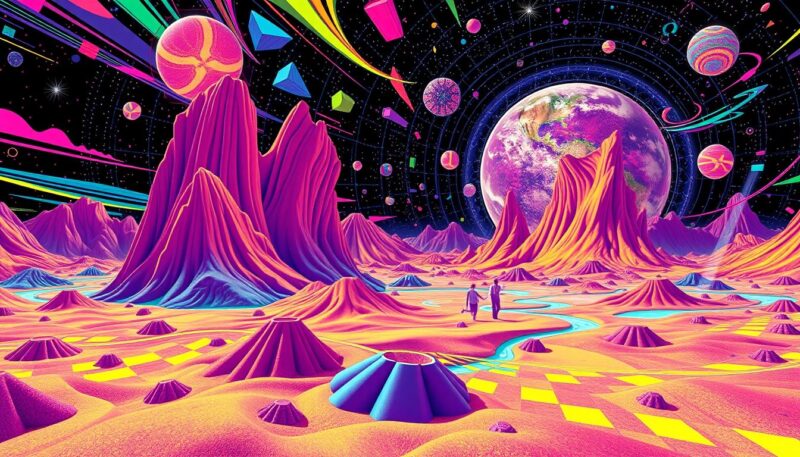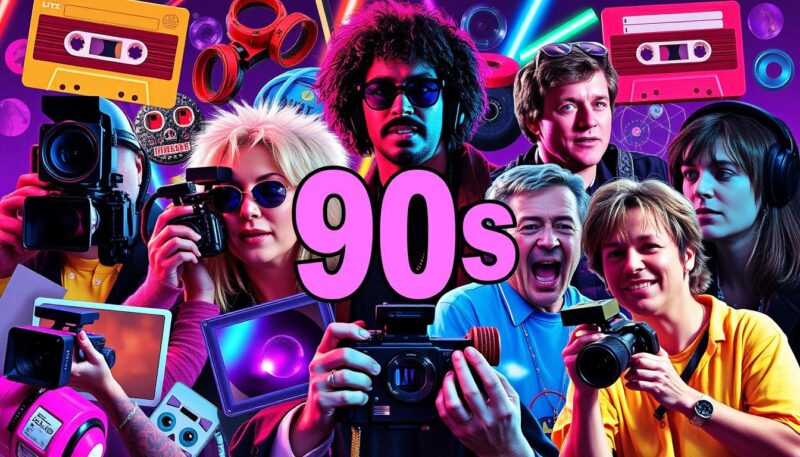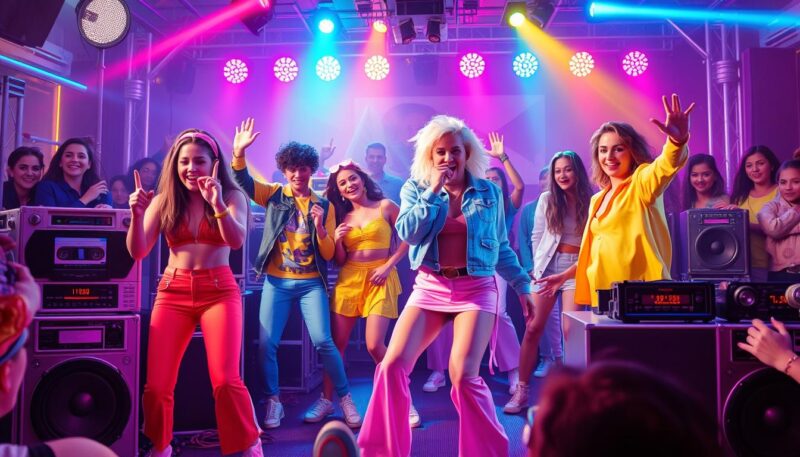Ah, the 90s—a decade marked by unique fashion, grunge rock, and the golden age of music videos. During this transformative music scene, MTV was the undisputed king of popular culture, and its primary focus was airing music videos rather than the reality TV shows it would later become famous for. Music videos weren’t just promotional tools; they were a crucial part of the MTV era, providing a platform for artists to tell stories and connect more deeply with their audiences.
This period saw the birth of iconic music videos that are still revered today. Whether it was the Beastie Boys’ police parody “Sabotage” directed by Spike Jonze, or Weezer’s “Buddy Holly,” which made clever use of the set from the 70s sitcom “Happy Days,” these videos left a lasting impression on 90s pop culture. Another unforgettable example is Nine Inch Nails’ “Closer,” whose macabre imagery haunts viewers to this day, much like vivid childhood memories.
Directors during this time were highly innovative, using video as a medium to explore new storytelling techniques and special effects. Who could forget the oversized hat and moving floor in Jamiroquai’s “Virtual Insanity,” or the fish-eye lens in Busta Rhymes’ “Gimme Some More,” directed by Hype Williams? These groundbreaking visuals and compelling narratives not only defined the MTV era but also set the stage for the future of music videos.
MTV’s influence was so profound that it launched a sister channel, MTV2, in August 1996, with Beck’s “Where It’s At” as the inaugural video. Dr. Dre, unexpectedly appearing in various music videos, and the use of clay animation, were just a few examples of the creative measures artists and directors took to captivate audiences.
By focusing on pushing the creative envelope, these music videos increased a song’s popularity and often catapulted the artists to superstardom. From Lauryn Hill’s split-screen technique in “Doo Wop (That Thing)” to Fatboy Slim’s “Praise You,” which was created on a shoestring budget, the 90s was a marvelous era for music videos. So, join us as we take a nostalgic look back at the best 90s music videos that exemplified a time when MTV still played actual music.
Key Takeaways
- The 90s was the golden age of music videos, significantly shaped by MTV.
- Iconic music videos like Beastie Boys’ “Sabotage” and Weezer’s “Buddy Holly” were major highlights of the MTV era.
- Innovative storytelling techniques and special effects were used to captivate viewers and elevate songs.
- MTV launched MTV2 in 1996, further expanding its influence on 90s pop culture.
- Directors like Spike Jonze and Hype Williams were pivotal in shaping the visual landscape of 90s music videos.
The Rise of the Music Video: MTV’s Golden Era
The 90s ushered in a golden era for music videos, with MTV being the driving force behind their mass proliferation. It was the decade where the music video format truly thrived creatively and commercially, bringing artists and audiences closer than ever before. This period saw an explosion of visual innovation, transforming the best 90s music videos into iconic cultural moments.
The Birth of Iconic Music Videos
The 90s represented a renaissance for music videos, marked by artistic freedom and experimentation. Directors like David Fincher, Hype Williams, and Spike Jonze emerged, each bringing a unique style to the screen. For example, Spike Jonze’s direction of the Beastie Boys’ “Sabotage” (1994) showcased a fast-paced, cinematic approach that has left a lasting influence.
Madonna’s music videos played a significant role during MTV’s golden era. “Bedtime Story” (1995), directed by Mark Romanek, “Frozen” (1998), directed by Chris Cunningham, and “Human Nature” (1995), directed by Jean-Baptiste Mondino, remain iconic examples of music video artistry and innovation. These directors explored various storytelling in music, creating visual masterpieces that complemented the songs’ lyrical depth.
Exploration of New Storytelling Techniques
The 90s were also notable for their exploration and expansion of storytelling in music videos. One standout is Jonathan Glazer’s “Virtual Insanity” (1996) for Jamiroquai, which used innovative set design to create an unforgettable visual experience. This approach was evident in various other works of the time, such as the surreal suburbia scenes in Soundgarden’s “Black Hole Sun,” directed by Howard Greenhalgh, which featured unnerving imagery and excessive smiles.
Additionally, the era saw the development of unique cinematography techniques. David Fincher’s work on A Perfect Circle’s “Judith” (2000) showcased excellence in cinematography and editing. Similarly, Joseph Kahn’s direction of Brandy and Monica’s “The Boy is Mine” (1998) received praise for its striking aesthetic, including color schemes and set design.
The 90s music video directors pushed the boundaries of the format, elevating music videos to a form of artistic expression. Michel Gondry’s minimalist and Faux Naïve aesthetic in The White Stripes’ “Dead Leaves and the Dirty Ground” (2002) was a prime example of this innovation. Furthermore, Jonathan Dayton and Valerie Faris’s bold use of video game imagery in the Red Hot Chili Peppers’ “Californication” (2000) resonated with the song’s message on American culture.
As we reflect on MTV’s golden era, it becomes clear that the best 90s music videos were more than just promotional tools. They were powerful storytelling mediums that continue to influence today’s music video directors, proving that the creativity and impact of this era remain unmatched.
Groundbreaking Visuals in 90s Music Videos
The 1990s undeniably marked a transformative period for music videos, elevating them into art forms with groundbreaking visuals that captivated audiences. These visual masterpieces were often as significant as the music itself, creating a dynamic fusion of sound and imagery that defined the era.
One exemplary showcase of innovative music videos is Nirvana’s “Smells Like Teen Spirit”, which not only achieved platinum status but also dominated the MTV Music Video Awards, winning Best New Artist and Best Alternative Group. This milestone video is the band’s biggest hit and demonstrates the power of visual storytelling in catapulting a song to iconic status.

Another standout is Radiohead’s “Karma Police”, which is celebrated for its intriguing visual storytelling, despite being considered a failure by its director, Jonathan Glazer. The video’s haunting and existential themes are a testament to the innovative approaches taken during the decade.
The use of 90s video effects is beautifully highlighted in Peter Gabriel’s “Sledgehammer”, featuring intricate claymation that continues to mesmerize viewers. Similarly, Björk’s “Hunter” showcases avant-garde concepts with the presence of a menacing animated bear, pushing the boundaries of visual storytelling.
| Artist | Video | Award/Recognition |
|---|---|---|
| Nirvana | “Smells Like Teen Spirit” | Best New Artist, Best Alternative Group (MTV Music Video Awards) |
| Sinéad O’Connor | “Nothing Compares 2 U” | Video of the Year (MTV Music Video Awards) |
| TLC | “Waterfalls” | Video of the Year (1995 VMAs) |
| R.E.M. | “Everybody Hurts” | Addressed Suicide – 6th Highest Cause of Death in U.S. |
| The Beastie Boys | “Sabotage” | Best Video (That Should Have Won a Moonman) Award |
Figures like Fiona Apple and Lauryn Hill also utilized groundbreaking visuals and innovative techniques. Apple’s “Criminal” tackled topics like slut-shaming and the heroin-chic body trend, while Hill’s “Doo Wop (That Thing)” uniquely depicted parallel scenes from 1967 and 1998 through a split-screen effect.
Whether it was the optical illusions in Jamiroquai’s “Virtual Insanity” or the socially conscious themes in TLC’s “Waterfalls”, the combination of inventive visual elements and storytelling in 90s music videos left an indelible mark on the industry. This era continues to be a reference point for contemporary artists seeking to push the boundaries of visual expression in their work.
Influential Directors of the 90s
The 90s were a significant period for visionary music video directors who set the bar for future creatives in the industry. These influential directors brought innovation and flair to 90s music video creation, leaving a lasting legacy.

Michael Jackson – “Black or White”
Michael Jackson’s “Black or White,” directed by John Landis, was notable for its use of black and white cinematography with added color, enhancing the visual flair of the video. This video exemplified the power of storytelling in music video creation, becoming one of the most celebrated visuals of the decade.
Madonna – “Vogue”
Directed by David Fincher, Madonna’s “Vogue” paid tribute to the golden era of Hollywood with its monochromatic elegance and Art Deco sets. This video established itself as one of the most iconic of the 90s, showcasing Fincher’s skill in creating visually stunning and culturally impactful music videos.
Spike Jonze: Revolutionizing the Music Video
Spike Jonze emerged as a revolutionary figure in 90s music video creation. He directed memorable works such as Weezer’s “Buddy Holly,” seamlessly integrating the band into scenes from “Happy Days.” Jonze’s guerilla-style shooting in Fatboy Slim’s “Praise You,” featuring The Torrance Community Dance Group, brought a fresh, inventive approach that resonated widely. His work extended to directing for Björk, The Beastie Boys, and The Chemical Brothers, continuously pushing the boundaries of music video artistry.
| Director | Notable Works |
|---|---|
| Michael Jackson | “Black or White” |
| Madonna | “Vogue” |
| Spike Jonze | “Buddy Holly,” “Praise You,” “Elektrobank” |
Best 90s Music Videos
The 90s produced an array of music videos that remain deeply ingrained in the memory of those who experienced the decade firsthand. These unforgettable anthems continue to evoke nostalgia, bringing you back to a time when MTV still played actual music. From Britney Spears’ schoolgirl-themed “…Baby One More Time” to the Spice Girls’ vibrant “Wannabe,” these videos quickly became inseparable from their songs and icons of pop culture.
Anthemic videos such as Nirvana’s “Smells Like Teen Spirit” and Aerosmith’s “Crazy” captured the spirit of the time with their distinctive styles and narratives, cementing their places in music history. Kurt Cobain and his bandmates resonated with teens worldwide, while Aerosmith’s dramatic storytelling had an equally compelling impact. The scene in “Smells Like Teen Spirit” featuring a school gym setting with three musicians and kids is as iconic today as it was then.
The 90s music video countdown also highlighted varied genres and aesthetics. The Prodigy’s “Firestarter” and No Doubt’s “Don’t Speak” brought alternative and ska influences to the forefront. Radiohead’s “No Surprises” offered a unique visual approach with Thom Yorke’s head submerged in water, shot at high speed then slowed down, while Daft Punk’s “Around The World” mesmerized viewers with its hypnotic, looping format. Then there’s the poignant charm of Blind Melon’s “No Rain” with Heather DeLoach as the “Bee Girl,” and Foo Fighters’ “Big Me” parodying a TV ad, showcasing the diverse creativity the decade encompassed.
Massive Attack’s “Teardrop,” featuring a singing foetus in a memorable scene, and the epic production of Guns N’ Roses’ “November Rain”—an overblown video that cost millions to produce—also made their mark. Spike Jonze’s direction of Beastie Boys’ “Sabotage” paid homage to 1970s crime TV series, displaying the band’s versatility. These best 90s music videos not only defined a generation but also pushed creative boundaries, leaving a lasting legacy in the world of music and beyond.
Source Links
- https://thehardtimes.net/music/the-15-greatest-90s-music-videos-for-people-who-still-say-remember-when-mtv-actually-played-music/
- https://www.udiscovermusic.com/stories/90s-music-videos/
- https://www.rollingstone.com/music/music-lists/readers-poll-the-10-greatest-music-videos-of-the-1990s-22315/
- https://bastiendelhermite.medium.com/1992-2006-a-look-back-at-a-music-video-golden-age-f9ec9d50e1fd
- https://matheussiqueira.com/a-brief-history-of-music-video/
- https://indie88.com/the-25-most-iconic-music-videos-of-the-90s/
- https://www.cleveland.com/entertainment/2018/05/50_greatest_music_videos_of_th.html
- https://live365.com/blog/top-10-music-videos-of-the-90s/
- https://nerdist.com/article/5-film-directors-who-made-90s-music-videos/
- https://pitchfork.com/features/lists-and-guides/7849-the-top-50-music-videos-of-the-1990s/
- https://www.radiox.co.uk/features/x-lists/best-music-videos-of-the-1990s/
- https://pulsemusic.proboards.com/thread/157070/vh1s-top-90-videos-90s







